Managing diabetes isn’t just about cutting down on sugar — it’s about nourishing your body with the right foods that work with your system, not against it.
The journey to diabetes reversal begins on your plate, with everyday foods that help balance blood sugar, reduce insulin resistance, and support long-term metabolic health.
From fiber-rich grains and leafy greens to powerful spices like cinnamon and fenugreek, the right diet can transform how your body processes glucose.
In this guide, we’ll uncover the best food for diabetes reversal — nutrient-dense, easily available options you can eat daily to naturally lower your sugar levels and take charge of your health again.
What Is Diabetes and How Does It Affect Your Body?
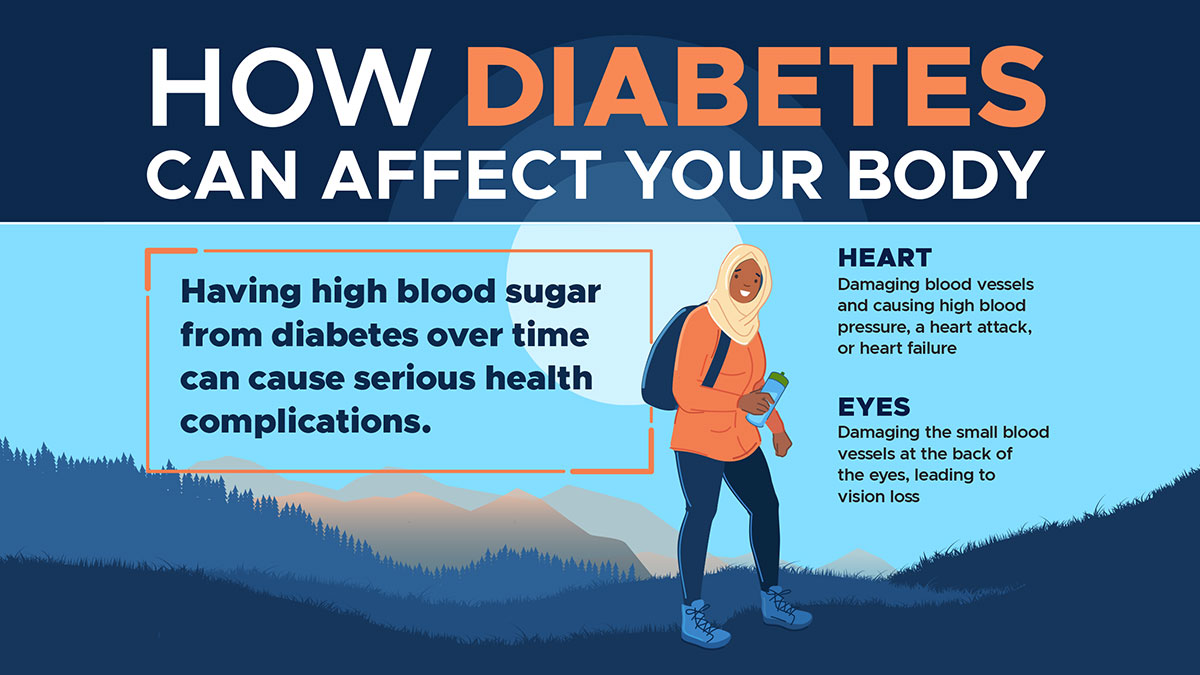
Diabetes is a chronic condition that happens when your body cannot properly regulate blood sugar (glucose) levels.
Glucose is the main source of energy for your cells, but when insulin — the hormone responsible for moving sugar from the blood into cells — doesn’t work effectively or isn’t produced enough, sugar starts to build up in the bloodstream.
Over time, this can lead to serious health issues affecting your heart, kidneys, eyes, and nerves. Maintaining disease control through a healthy lifestyle and eating healthy foods plays a crucial role in managing diabetes and improving overall health.
Without proper management, diabetes can contribute to other complications such as high blood pressure and cardiovascular problems. Here’s how diabetes affects your body and how lifestyle choices can help:
- Energy Imbalance: Your body struggles to convert food into usable energy, leading to fatigue and sluggishness.
- Blood Vessel Damage: Persistently high blood sugar can weaken blood vessels, increasing the risk of high blood pressure and heart disease.
- Kidney and Eye Strain: Excess glucose can damage the kidneys’ filtering system and harm the tiny blood vessels in your eyes.
- Nerve Damage: Poor disease control may cause tingling, pain, or numbness in the hands and feet.
- Inflammation: Uncontrolled diabetes can cause chronic inflammation, weakening your overall health and immunity.
- Preventive Care: A healthy lifestyle with regular exercise, stress management, and healthy foods like whole grains, leafy greens, and lean proteins helps maintain stable blood sugar levels and promotes long-term disease control.
In short, diabetes affects nearly every part of the body — but with mindful eating, physical activity, and a commitment to a healthy lifestyle, it’s possible to manage and even reverse its effects naturally.
Why Does Diet Matter For Diabetes Reversal?
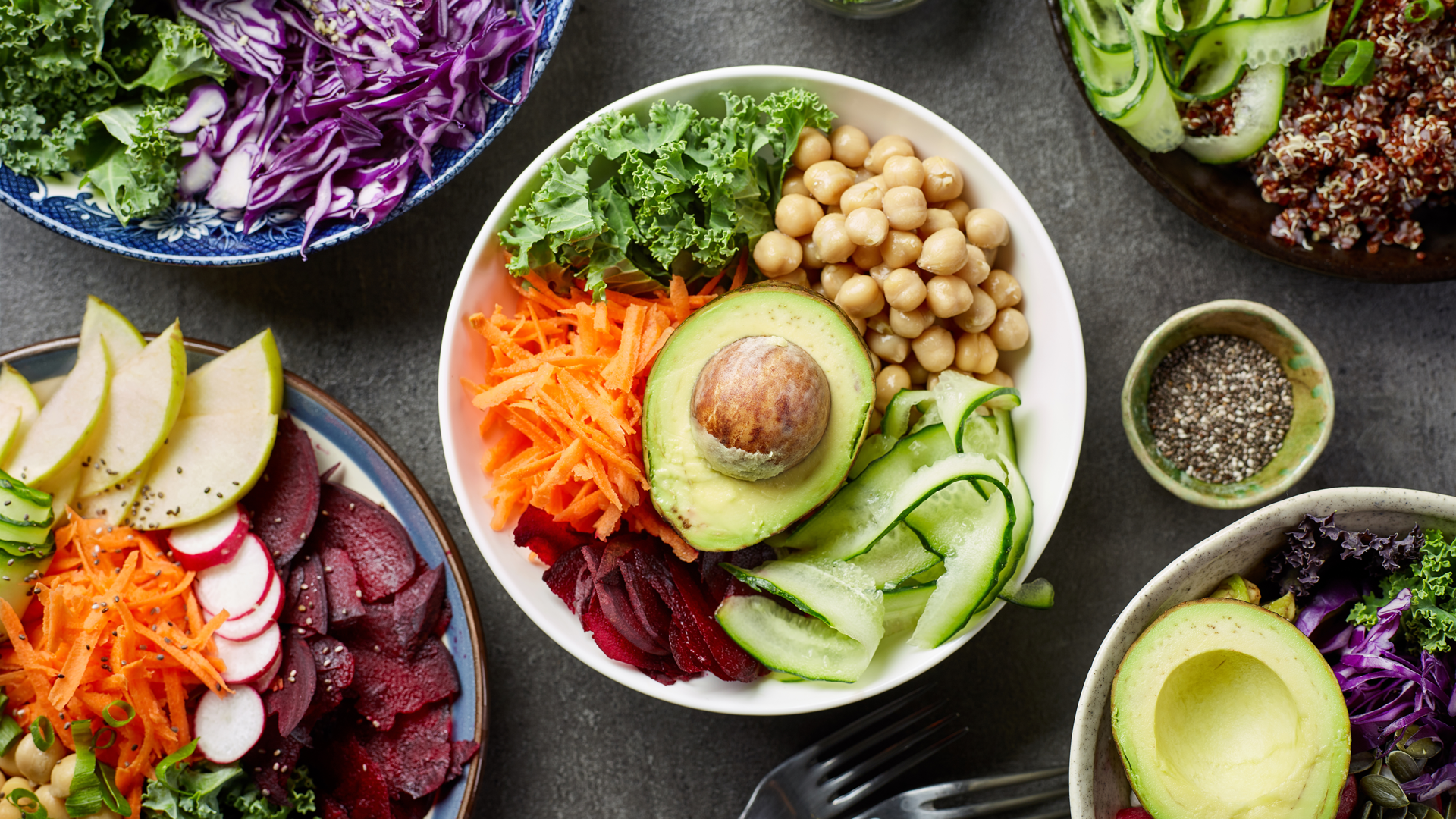
Diet plays a central role in diabetes reversal because what you eat directly affects your blood sugar levels, insulin sensitivity, and overall metabolic health.
Unlike medication, which only manages symptoms, the right diet targets the root cause — insulin resistance — helping your body naturally restore balance and maintain long-term disease control.
Here’s why your diet matters so much:
- Balances Blood Sugar Levels: Choosing nutritious food rich in fiber, complex carbs, and lean proteins helps prevent sudden sugar spikes and crashes.
- Improves Insulin Sensitivity: Incorporating foods high in fiber, omega-3s, and antioxidants — such as whole grains, nuts, seeds, and leafy greens — helps your cells respond better to insulin.
- Reduces Inflammation: Processed foods and refined sugar promote inflammation, while healthy foods like berries, turmeric, and vegetables protect your overall health.
- Supports Weight Management: A balanced diet of nutritious food helps maintain a healthy weight, lowering the risk of high blood pressure and heart complications.
- Encourages a Healthy Lifestyle: Eating foods high in essential nutrients and practicing mindful eating foster a sustainable healthy lifestyle that supports long-term disease control.
In essence, a diet rich in nutritious foods and foods high in fiber, vitamins, and minerals is the foundation of diabetes reversal — it helps your body heal from within, stabilize blood sugar, and strengthen overall health naturally.
How Does Diet Improve Blood Sugar Levels and Glycemic Index and Glycemic Load Control?
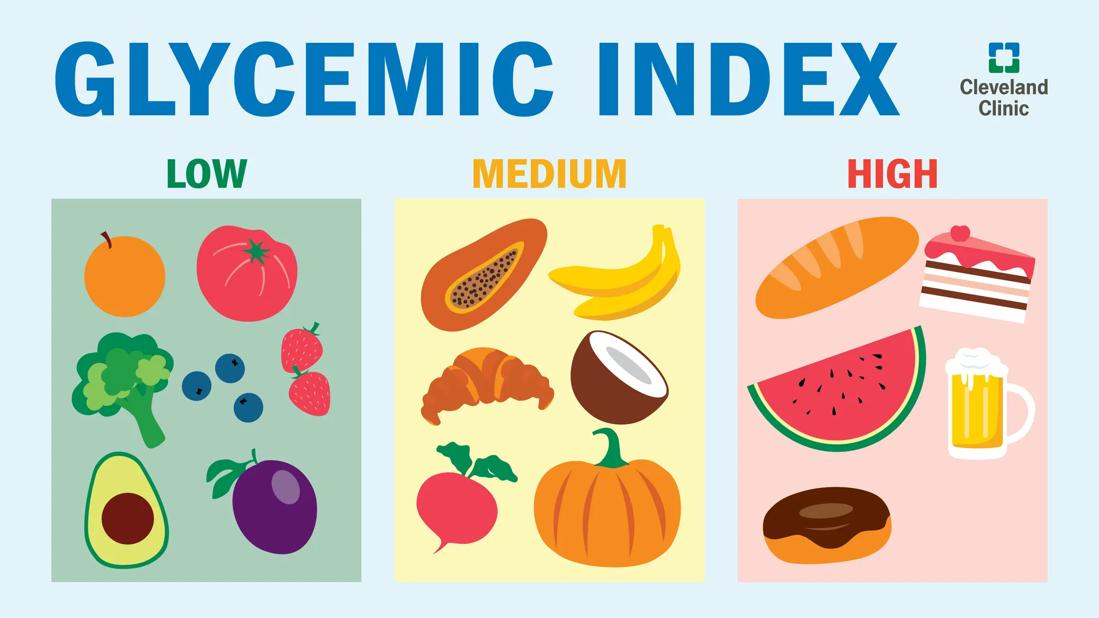
Maintaining glycemic control is one of the most important factors in preventing or reversing diabetes. The glycemic index (GI) measures how quickly a food raises blood sugar, while the glycemic load (GL) takes into account both the quality and quantity of carbohydrates.
A well-balanced diet focused on complex carbohydrates, whole fruits, and nutrient-dense meals can significantly improve both blood sugar stability and long-term health outcomes.
1. Understanding the Role of Diet in Glycemic Control
A healthy diet helps maintain stable blood sugar levels by regulating the rate at which glucose enters the bloodstream.
According to Harvard Health Publishing, foods with a low GI — such as lentils, brown rice, oats, and non-starchy vegetables — help achieve better glycemic control and reduce the risk of developing diabetes.
- Low-GI foods promote slow digestion, preventing sudden spikes and crashes in blood sugar.
- Diets rich in whole fruits and vegetables provide natural fiber and antioxidants that protect against inflammation and kidney failure.
- A randomized controlled trial has shown that participants following a low-GI diet experienced improved insulin sensitivity and more stable glucose levels compared to those consuming refined carbs.
2. Complex Carbohydrates vs. Refined Carbs
Replacing refined carbs (like white bread, pastries, and sugary snacks) with complex carbohydrates (such as quinoa, barley, and sweet potatoes) is essential for glycemic control.
- Complex carbohydrates digest slowly, releasing glucose gradually for sustained energy.
- Refined carbs, on the other hand, cause sharp increases in blood sugar, which over time may lead to developing diabetes or worsen existing diabetes signs.
- Consuming whole fruits instead of fruit juices adds fiber, further helping to stabilize blood sugar and lower overall glycemic load.
3. Impact on Weight Loss and Disease Prevention
A diet that emphasizes low-GI foods not only aids glycemic control but also supports weight loss, which is crucial for reducing insulin resistance.
- Research, including a randomized controlled trial, has found that individuals who follow low-GI diets achieve better weight loss outcomes and improved metabolic markers.
- Harvard Health Publishing notes that even a modest weight loss of 5–10% can significantly reduce the risk of developing diabetes and prevent complications such as kidney failure.
4. Long-Term Benefits of Low-GI Eating
By consistently choosing foods with a low glycemic load, you can support long-term disease control and prevent further complications.
- Helps maintain steady energy and mood levels throughout the day.
- Reduces the strain on the pancreas, preventing insulin burnout.
- Minimizes the risk of high blood pressure, kidney failure, and cardiovascular disease associated with poor glycemic control.
Which Meals Should You Include Daily For Diabetes Control?
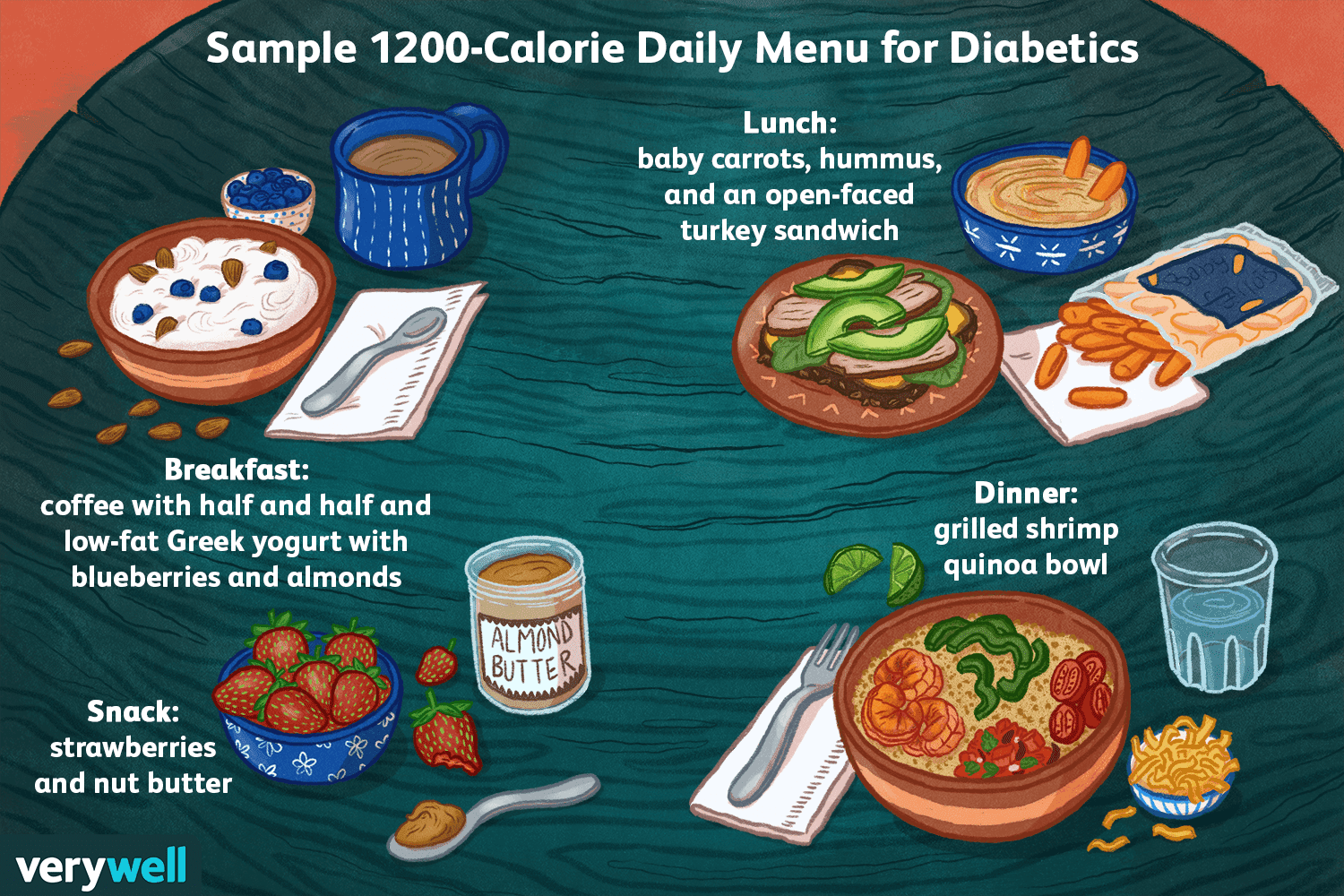
Achieving stable blood sugar and better glycaemic control starts with what’s on your plate.
The right meals — rich in fiber, healthy fats, and essential nutrients like vitamin D and vitamin C — can significantly improve your energy, reduce cravings, and help prevent long-term complications of diabetes.
Below are the key meals and food combinations you should include daily for effective diabetes control.
1. Breakfast: Fiber and Protein for Steady Energy
A balanced breakfast sets the tone for your entire day. It should include whole wheat grains, lean proteins, and healthy fats that slow down sugar absorption.
- Opt for whole wheat toast or oats topped with nuts and seeds for fiber and sustained energy.
- Add plain yogurt or boiled eggs for protein and gut health.
- Include a small serving of citrus fruits like oranges or kiwis to boost vitamin C, which supports immune function and enhances glycaemic control.
- Research suggests that a nutrient-rich breakfast helps reduce post-meal glucose spikes and improves insulin sensitivity throughout the day.
2. Lunch: Whole Grains and Colorful Vegetables
Lunch should focus on complex carbohydrates, lean proteins, and healthy fats that maintain blood sugar stability and promote fullness.
- Choose whole wheat chapati, brown rice, or quinoa as your carb base.
- Pair with lentils, beans, or grilled paneer for protein.
- Load your plate with colorful vegetables — spinach, bell peppers, carrots — rich in fiber and antioxidants.
- Include a squeeze of lemon or a salad with tomatoes to add vitamin C, which supports vascular health and aids iron absorption.
- A drizzle of olive oil or avocado provides healthy fats that enhance nutrient absorption and heart health benefits.
3. Snack: Simple, Blood Sugar-Friendly Options
Smart snacking helps maintain consistent glucose levels between meals.
- Try a handful of nuts (almonds, walnuts) — excellent sources of healthy fats and protein.
- A bowl of plain yogurt with chia seeds or berries provides probiotics and fiber. Berries are also a good source of vitamins C, offering antioxidant properties and nutritional benefits.
- Research suggests that incorporating snacks rich in vitamin D and protein improves glycaemic control and reduces hunger cravings.
4. Dinner: Light, Nutritious, and Easy to Digest
Dinner should be lighter yet packed with nutrients to support overnight glycaemic control.
- Include whole wheat roti or vegetable soup with lentils or tofu for protein.
- Add lightly sautéed vegetables with healthy fats like olive oil or ghee for better digestion and metabolic support.
- Consider fortified milk or a small portion of fish or eggs to boost vitamin D levels — essential for insulin regulation and bone health benefits.
5. Daily Additions for Better Diabetes Management
Small daily additions can have big effects on glycaemic control:
- Vitamin C-rich foods like guava, amla, and citrus fruits help lower oxidative stress and improve blood vessel health.
- Vitamin D from sunlight exposure or fortified foods enhances insulin sensitivity.
- Regular intake of healthy fats supports heart health and maintains hormonal balance.
- Research suggests that consistent nutrient intake and mindful eating greatly enhance long-term health benefits for people managing diabetes.
How Can a Healthy Diet and Diabetes Diet Help Control Sugar Balance?
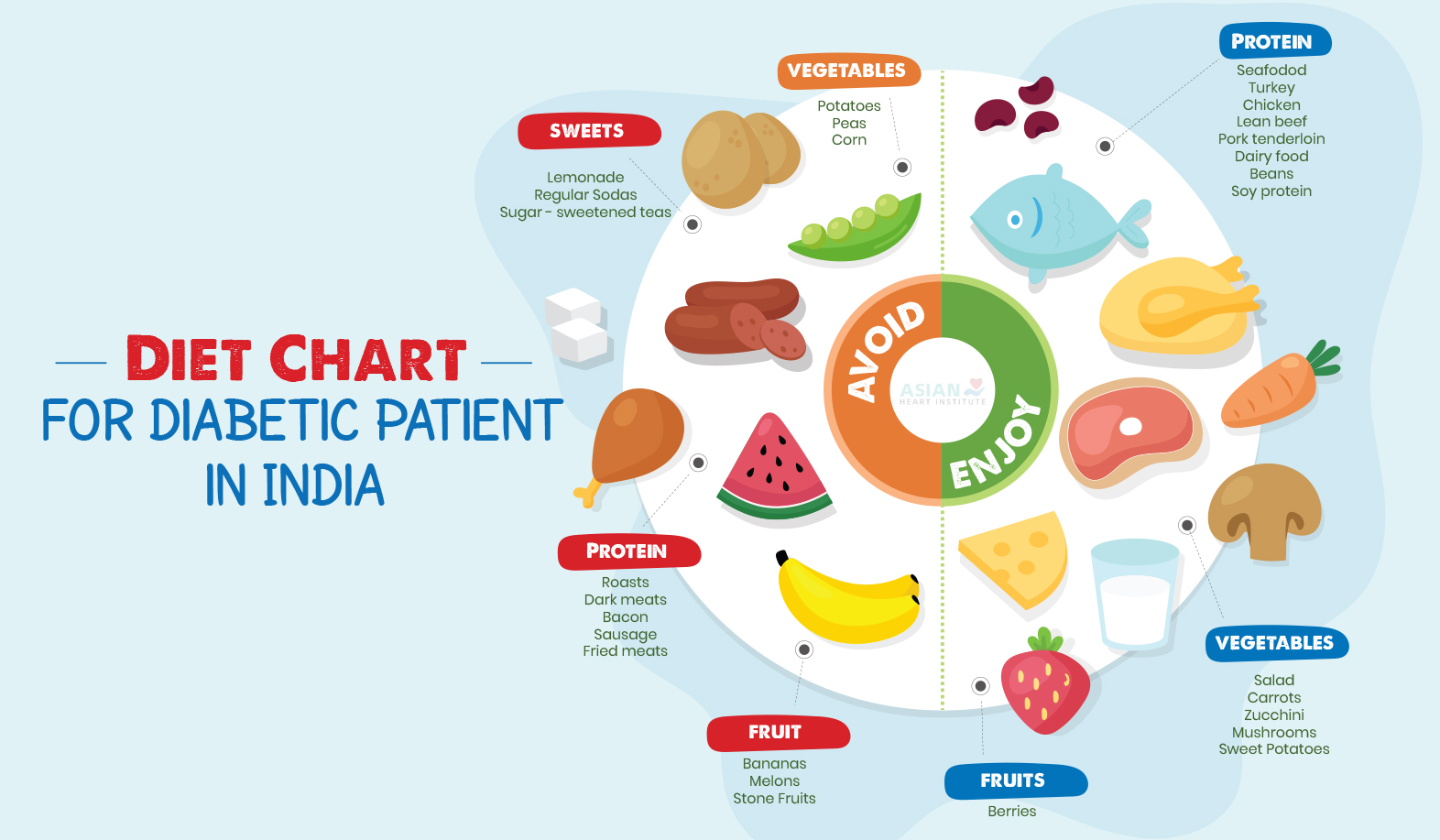
A well-structured diabetes meal plan is one of the most powerful tools for maintaining stable blood sugar levels and preventing long-term complications.
A balanced diet rich in nutrients and low in harmful fats helps your body use insulin more effectively, reduces inflammation, and supports overall metabolic health.
According to the American Diabetes Association (ADA), consistent healthy eating habits can improve insulin sensitivity and lower the risk of complications like digestive and kidney diseases.
1. The Role of a Diabetes Meal Plan in Sugar Balance
A diabetes meal plan focuses on balanced nutrition — combining complex carbs, lean proteins, and healthy fats to keep glucose levels steady throughout the day.
- Instead of simple carbohydrates (like white rice or sweets), opt for whole grains, legumes, and vegetables that digest slowly and prevent sugar spikes.
- Include flax seeds, chia seeds, and fatty fish such as salmon or mackerel, which are rich in omega-3s that reduce inflammation and support heart health.
- Reading food labels carefully helps avoid hidden sugars and refined ingredients that can disrupt sugar balance.
2. Healthy Fats vs. Harmful Fats
Not all fats are bad — in fact, the right kinds can support blood sugar control.
- Choose healthy fats from sources like nuts, fatty fish, olive oil, and flax seeds, which improve cholesterol levels and reduce inflammation.
- Limit trans fats and saturated fats, commonly found in fried foods, baked goods, and processed snacks, as these increase insulin resistance and raise heart disease risk.
- The American Diabetes Association recommends focusing on unsaturated fats to protect heart health while maintaining stable blood glucose.
3. Protecting Digestive and Kidney Health
Uncontrolled diabetes can lead to serious complications, including digestive and kidney diseases. A healthy, well-balanced diet helps prevent these by reducing oxidative stress and improving circulation.
- A diet high in fiber from vegetables, beans, and flax seeds promotes better digestion and slows down glucose absorption.
- Adequate hydration and limiting sodium also support kidney function.
- Research backed by the American Diabetes Association emphasizes that improving nutrition quality plays a crucial role in protecting against digestive and kidney diseases related to diabetes.
4. Smart Food Choices and Label Reading
Being aware of what you eat is as important as the food itself. Learning to read food labels ensures you avoid simple carbohydrates, hidden sugars, and unhealthy oils that disrupt your sugar balance.
- Choose foods labeled “whole grain,” “no added sugar,” or “low sodium.”
- Avoid snacks with hydrogenated oils, which are sources of trans fats.
- Opt for nutrient-dense options like fatty fish, flax seeds, leafy greens, and legumes for better blood sugar regulation and heart protection.
5. The Long-Term Benefits of a Healthy Diabetes Diet
Following a diabetes meal plan not only helps manage blood sugar but also improves energy, supports digestive and kidney health, and lowers the risk of cardiovascular problems.
- Including omega-3-rich fatty fish, fiber, and flax seeds helps maintain insulin sensitivity.
- Avoiding trans fats, saturated fats, and simple carbohydrates ensures long-term sugar balance and reduces inflammation.
- The American Diabetes Association highlights that consistent dietary management can prevent diabetes-related complications and promote overall well-being.
Why Is Avoiding Added Sugar and Bad Carbs iImportant For Diabetes Management?

1. The Impact of Added Sugar on Blood Sugar Levels
Avoiding added sugar is one of the most effective ways to maintain healthy glucose levels and support long-term good health.
- Added sugars — found in sweets, processed snacks, and sugary drinks — cause rapid spikes in blood glucose, forcing the pancreas to release more insulin.
- Over time, this leads to insulin resistance and worsens diabetes symptoms. According to the National Institute of Diabetes and Digestive and Kidney Diseases, high sugar intake increases the risk of cardiovascular disease and nerve damage.
- Replacing sugary beverages with water or unsweetened tea is a simple yet powerful helpful tool for keeping blood sugar stable and promoting overall wellness.
2. The Problem with Bad Carbs
Bad carbohydrates, such as refined flour, white rice, and sugary cereals, break down quickly into glucose, flooding the bloodstream with sugar.
- These simple carbs lack fiber, leading to poor satiety and higher calorie intake. Over time, this can raise the risk of obesity, heart disease, and worsening insulin resistance.
- The National Institute emphasizes that limiting refined carbs can reduce inflammation and improve insulin sensitivity — both essential for diabetes control and good health.
3. The Power of Good Carbs for Diabetes Management
Instead of cutting out carbohydrates entirely, focus on replacing bad carbs with complex, nutrient-rich alternatives. Foods like black beans and whole oats are excellent examples.
- Black beans provide plant-based protein and fiber, which slow glucose absorption, while whole oats are rich in beta-glucan, a soluble fiber known to lower cholesterol and improve blood sugar regulation.
- These whole, minimally processed foods promote steady energy levels and support a lower risk of diabetes complications.
4. Making Smart Beverage and Dairy Choices
Hidden sugars are often found in flavored dairy products and packaged drinks. Even items labeled “low-fat” or “healthy” can contain significant amounts of added sugar. Choosing plain or unsweetened options can make a big difference.
- Unsweetened tea, black coffee, and plain milk or yogurt offer hydration and nutrients without blood sugar spikes.
- Opting for unsweetened dairy products ensures you still get calcium, vitamin D, and protein — vital for bone strength and good health — without sabotaging your diabetes meal plan.
5. Long-Term Benefits of Limiting Sugar and Refined Carbs
Over time, reducing added sugar and bad carbs helps maintain insulin sensitivity, improve metabolism, and reduce fat accumulation around the organs.
- These benefits translate to a lower risk of heart disease, obesity, and other diabetes-related complications.
- The National Institute confirms that making small, consistent dietary changes — such as swapping refined foods for whole oats, legumes like black beans, and beverages like unsweetened tea — serves as a sustainable helpful tool for effective blood sugar management and lifelong good health.
How Can a Healthy Eating Plan Improve Health and Diabetes Control?
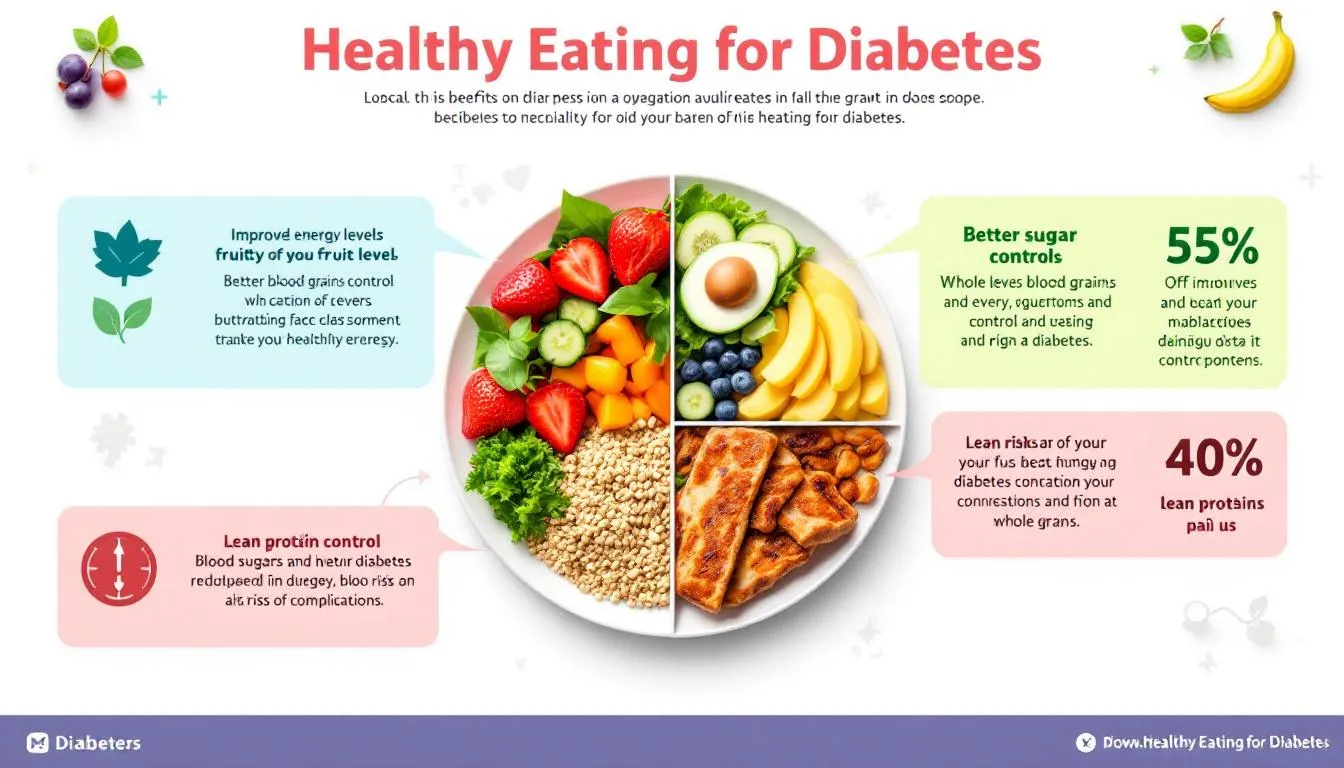
A well-balanced eating plan is one of the most effective strategies for managing diabetes and improving overall health.
By focusing on nutrient-rich foods, portion control, and mindful choices, you can regulate blood sugar levels, reduce inflammation, and even lower your cardiovascular risk factors.
A healthy eating plan doesn’t just control diabetes — it also supports long-term wellness, helping you lose weight and prevent complications.
1. Better Blood Sugar Management with Low Glycemic Index Foods
Choosing foods with a low glycemic index (GI) is crucial for stabilizing blood sugar levels. Low-GI foods release glucose slowly into the bloodstream, preventing sudden spikes that can worsen diabetes symptoms.
- Whole grains, legumes, and cruciferous vegetables like broccoli, cabbage, and cauliflower are excellent choices. These foods promote steady energy, reduce hunger cravings, and help maintain consistent glucose levels throughout the day.
- A diet built around low-GI foods is proven to enhance diabetes control and protect against long-term organ damage.
2. Supporting Weight Management and Metabolic Health
A healthy eating plan helps you naturally lose weight, which plays a major role in improving insulin sensitivity. Even a modest reduction in weight can significantly lower blood sugar levels and improve overall metabolism.
- Including fiber-rich foods, lean proteins, and healthy fats helps you feel fuller longer, reducing overeating and cravings for processed snacks.
- The combination of portion control and nutrient balance allows you to maintain a sustainable calorie deficit while still getting essential nutrients.
3. Reducing Cardiovascular Risk Factors
People with diabetes often face an increased risk of heart disease, stroke, and other cardiovascular issues.
- A balanced diet helps lower these cardiovascular risk factors by improving cholesterol levels, reducing blood pressure, and preventing artery inflammation.
- Replacing saturated fats with unsaturated fats, eating omega-3-rich foods like salmon and flaxseeds, and including plenty of cruciferous vegetables support heart health while keeping blood sugar under control.
4. Enhancing Overall Health and Long-Term Disease Control
Beyond diabetes management, a healthy eating plan provides a strong foundation for total body wellness.
- Regularly consuming low glycemic index foods and antioxidant-rich vegetables strengthens the immune system and improves digestion.
- Cruciferous vegetables offer powerful anti-inflammatory and detoxifying properties that protect against chronic diseases. Over time, these choices lead to better diabetes control, a stronger metabolism, and improved vitality.
HealthyWayFit — India’s Most Personal Diabetes Reversal Program

Living with diabetes often feels like carrying an invisible weight. You may hear advice like “eat less,” “exercise more,” or “take another pill,” yet your sugar levels remain stubborn, energy dips continue, and every lab report seems alarming.
What’s missing isn’t your effort—it’s the right system and nutrition program That’s where HealthyWayFit comes in.
We are not a generic app or mass-market nutritional approach chart. HealthyWayFit is a 12-month, end-to-end diabetes reversal program designed for Indian professionals, focusing on practical diabetes diet solutions that fit into your lifestyle.
Over the past few years, we’ve helped hundreds of Indians lower HbA1c, reduce medicine dependency, and, in many cases, achieve complete reversal.
Our approach is empathetic, therapeutic, and committed. We listen first, design second, and guide you at every step.
What Makes HealthyWayFit Different?
1. Daily Foods That Support Blood Sugar Control
No quinoa fads or complicated smoothie charts. Our nutrition plans work with your ghar ka khana—dal, roti, rice, idli, dosa, paneer, sabzi—and are tailored to keep blood sugar levels steady. This practical healthy eating plan ensures you can enjoy your meals while managing diabetes effectively.
2. Metabolic Exercise That Complements Your Diet
Simple metabolic movements targeting major muscle groups (legs, shoulders, glutes) in just 15–20 minutes help lower blood sugar levels naturally. No gym membership is required—exercise pairs perfectly with your diabetes nutritional approach.
3. Stress & Sleep Mastery
Stress increases cortisol, which can spike sugar levels. We teach practical tools—one-minute breathing exercises, sleep optimization, and micro-habits—to stabilize sugars even on busy days.
4. Doctor-Led, Holistic Care
Work directly with a Senior MD Diabetologist while lifestyle coaches optimize your healthy nutritional approach. This blend of medical supervision and healthy eating plan ensures safe and effective diabetes management.
5. Relentless Support & Accountability
Weekly coaching calls, daily check-ins, and guides for festivals, dining out, and travel ensure your eating habits remain consistent, reinforcing your natural sugar balance.
Results You Can Expect
Most clients notice improvements within 20–60 days: lower glucose level, more energy, and better mornings. Over the full program, results are designed to be sustainable, supporting long-term diabetes reversal.
Who Is HealthyWayFit For?
If you are a professional or entrepreneur ready to commit 15–30 minutes a day to your fitness, HealthyWayFit is ideal. This program is not a crash course—it’s a personalized system built around your food, lifestyle, and family routines.
Take the Next Step
Start with a personal consultation to assess your fitness markers and lifestyle. From there, we design a custom glucose management meal plan with best foods for natural glucose balance, ensuring you eat daily foods that naturally lower high sugar.
Visit healthywayfit to explore how you can move beyond “managing” diabetes and actually reverse it — sustainably, safely, and with support at every step. Also book appointment for consultation on calendly.
Frequently Asked Questions (FAQs)

1. Which protein foods and grains are best for daily meals?
Include lentils, chickpeas, paneer, eggs, and fatty fish for protein. Choose whole grains like brown rice, quinoa, and whole wheat to support balanced blood sugar and energy.
2. Which citrus fruits and whole foods should I include in my eating plan?
Add oranges, grapefruit, amla, and lemon for vitamin C. Combine with whole foods like oats, beans, and vegetables to enhance immunity, glycemic control, and overall health.
3. What meals should diabetics completely avoid?
Avoid refined carbs, fried snacks, white bread, sugary drinks, processed meats, and desserts. These spike blood sugar, increase inflammation, and harm long-term metabolic health.
4. How can a registered dietitian help optimize my nutritional approach?
A registered dietitian creates a personalized diabetes meal plan, ensuring balanced nutrients, improved glycemic control, and sustainable lifestyle changes based on clinical studies and your health goals.
5. What are the best foods for diabetes reversal?
Best foods include leafy greens, whole grains, nuts, seeds, fatty fish, and legumes. These promote insulin sensitivity, stabilize glucose levels, and support overall metabolic health.
Conclusion :
Reversing diabetes naturally starts with mindful eating and daily lifestyle choices. By focusing on whole, nutrient-dense foods — such as leafy greens, legumes, whole grains, citrus fruits, and fatty fish — you can restore insulin sensitivity and maintain stable blood sugar levels.
Combining this with regular physical activity, stress management, and medical guidance ensures long-term metabolic health and sustained energy.
Consistency matters more than restriction; every balanced meal brings you closer to better health and lasting diabetes control. With the right food, awareness, and support, diabetes reversal becomes not just possible — but sustainable.

